What Is a Trellis? Benefits, Designs & Installation
-
Pete Ortiz
- Last updated:

Gardening is becoming more popular, and with reduced space, people are resulting in new methods of utilizing the small spaces they have. A trellis is one of the ways you can utilize space to plant your favorite fruits and veggies. It is a framework of vertical support and horizontal cross pieces that can train plants such as shrubs, trees, and vines to grow up them. They are mostly used for climbing plants, such as vines.
In this article, we will take an all-around look at a trellis, including how you go about making one, how you can use it, and the best practices involved. Let’s dig in!
What Are Garden Trellises
A trellis can be considered a framework made of horizontal cross pieces and vertical supports that train plants that grow up against it. It also functions as a privacy screen and can be used as an accent piece. Mostly, trellises are made up of open frameworks, which allow plants to be woven through.
There are many options as to what you can make a trellis with. However, the trellis must remain strong and sturdy enough to withstand the elements, including rain, snow, and wind.
- Wire
- Wood
- Strong plastic or synthetic wire
- Monofilament
- Wrought iron
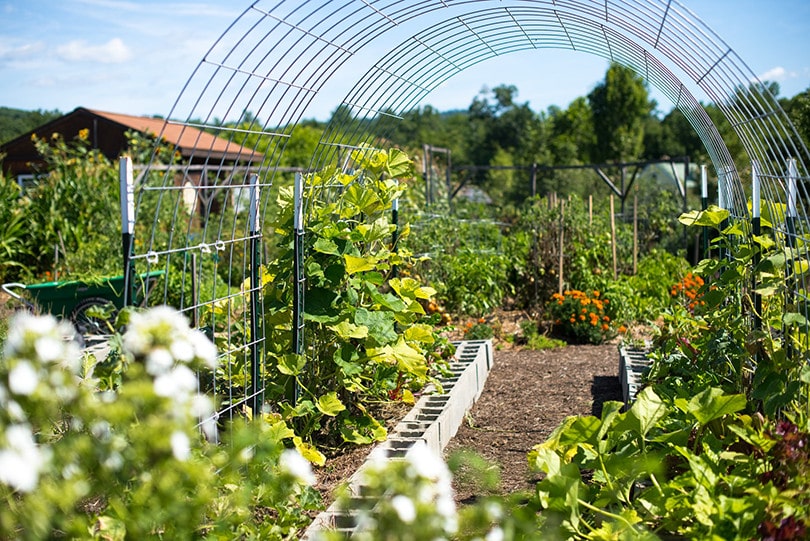
Benefits of a Trellis
- More space for your garden
- Deterrent to pests and insects
- Increased air circulation
- Allows pollinators easy access to your crops
- More sunlight exposure
- Reduced exposure to fungal disease
Things to Consider Before Choosing Your Trellis
You need to consider a couple of things before choosing the type of trellis you want to make for your garden.
1. Size of the Trellis
For one, the size of the trellis depends on the size of the plant you want to grow, but at the same time, it should not be so big as to swallow the plants.
Most trellises are made to fit against the side of a shed, wall, or fence. You should also remember that a trellis counts as a fence in most building regulations, meaning you should be aware of any restrictions in place, especially regarding the size of the trellis.

2. What to Plant
The next thing to consider is the type of material you want to use, depending on the intended plants. Take an objective look at what you want to grow. If you are hoping to grow things like flowers or sweet peas, you can work with a trellis that needs just a bit of support. For weighty plants with huge leaves and fruits, a sturdier material is best.
3. Location
The location you place the trellis matters as it will help with issues such as windy conditions. Also, ensure you can easily get the garden hose to the trellis or have water available nearby.
Shade is also an important factor, as the location of your trellis should provide enough sunlight to all plants.
Different Trellis Designs
Let’s look at some of the different types of trellis designs.
1. Lattice Trellis
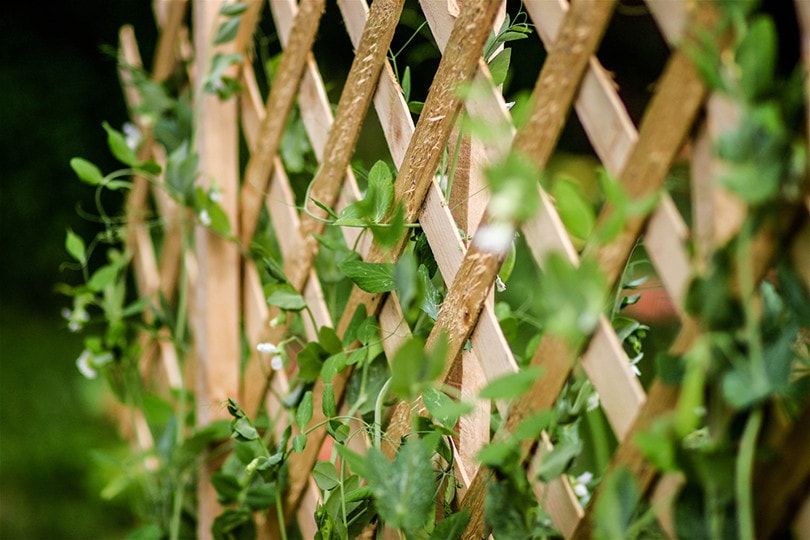
This is one of the most common types of trellis designs. It features more traditional designs and is typically made from vinyl or wood.
These types of trellis provide a sturdy structure supporting vines and climbing plants.
- English ivy
- Morning glory
- Clematis
- Virginia creeper
- Climbing rose
2. Wall-Mounted Trellis
A wall-mounted trellis will attach to the side of your home’s fence wall or main building. The trellis will get extra support from the walls or whatever it is supported against, plus it adds greenery to the side of your home.
- Grapevines
- Boston ivy
- Morning glory
- Clematis
- Climbing rose
- Sweet pea
3. Arched Trellis
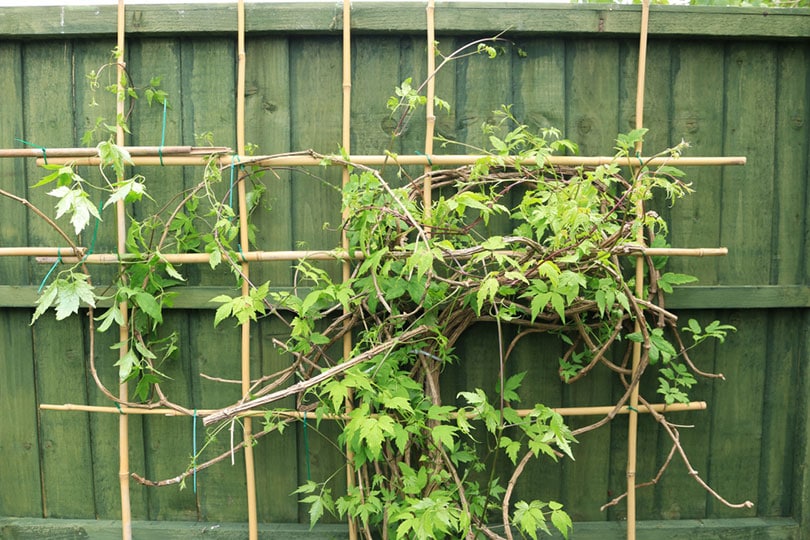
This type of trellis features two flat sides connected with an arch at the top. The trellis is often made from wood or metal and is mostly placed against the fence or side of the home for extra support.
- Squash and pumpkins
- Wisteria
- Climbing hydrangea
- Climbing rose
- Morning glory
- Scarlet runner bean
4. Obelisk Trellis
You can get an obelisk trellis in different designs, with the most common type being the column and pyramid designs. They are aesthetically pleasing enough to be the centerpiece of your garden and, at the same time, super functional.
- Runner bean
- Nasturtium
- Dwarf clematis
- Sugar snap pea
- Sweet pea
5. Expanding Trellis
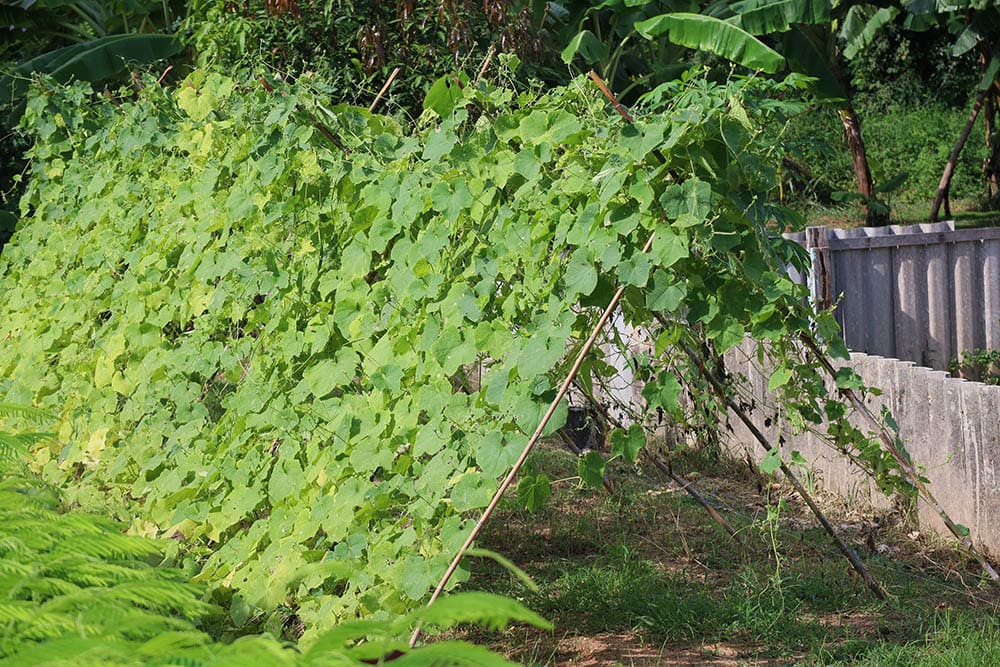
An expanding trellis will extend in height and length to better fit your garden. It is a great garden divider and décor, also acting as a gate for your pets.
- Tomato
- Cucumber
- Runner bean
- Climbing rose
- Peas
- Sweet pea
- Grapevine
6. Gothic Trellis
The gothic trellis is made of mainly metal or steel with pointed arches and slim lines as its distinct features. The gothic design is exquisite, making it an amazing accent piece for your garden.
- Black-eyed Susan vines
- Climbing rose
- Morning glory
- Clematis
- Scarlet runner bean
7. Fan Trellis
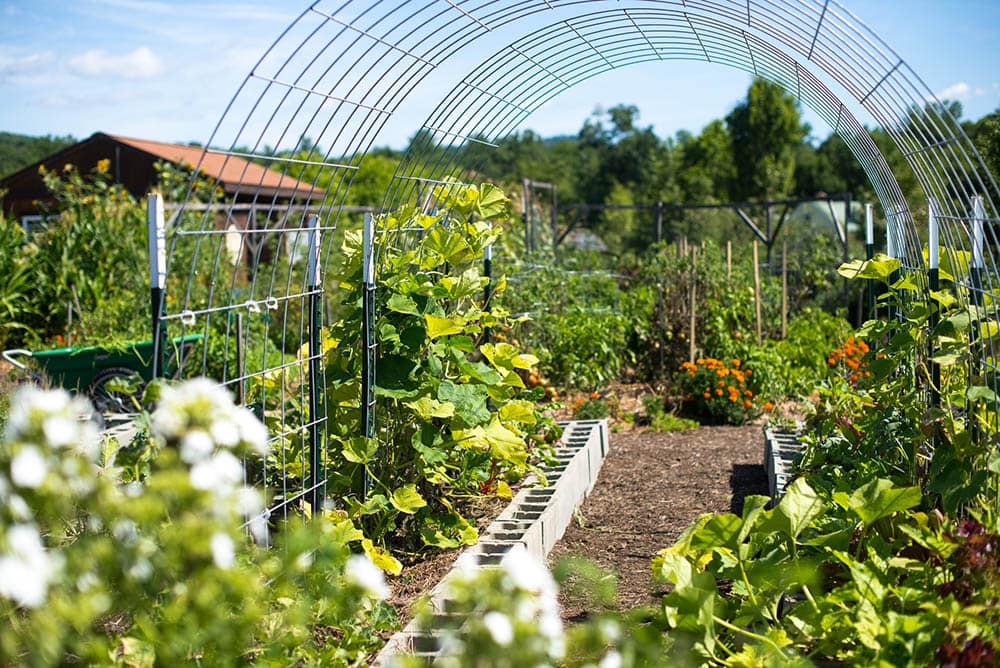
The fan trellis has a side that flares out, encouraging the plants to grow horizontally and vertically. Due to the shape, the trellis also makes a perfect fit for the corner of your garden.
- Climbing rose
- Wisteria
- Star jasmine
- Boston ivy
8. Folding Trellis
One of the easiest trellises to fold and store is the Folding trellis. You can easily move it around the garden.
- Cucumber
- Tomatoes
- Runner bean
- Clematis
- Sweet pea
- Nasturtium
Installing the Trellis
- Check the Manual: Every trellis will come with a manual with specific installation instructions. Read over them carefully to ensure you follow them exactly. Depending on the trellis you want to install, the location matters a lot. Some are small enough for planters, while others must go into the ground. For wall-mounted trellises, ensure they are a few inches away from the walls to leave enough room for the plants to weave through. It will also prevent vigorous vines from rooting into the walls’ crevasses.
- Assemble What Is Necessary: If the trellis comes as a set, you are in luck, as all you have to do is place it where you want it. But if you have to do some DIY, ensure you have the necessary tools.
- Dig Holes for Trellises that Need In-Ground Installation: Depending on the trellis type, you may need to dig some holes in the ground to support the trellis. You will be mostly required to dig between 18–20 inches into the ground to ensure the trellis remains sturdy after installation.
- Start Planting: After the trellis has been set up properly, you can start planting. You have many options, and with the help of the article, you can easily identify the best types of plants for the type of trellis chosen.
Final Thoughts
If you decide to get a trellis, get something that is strong with a beautiful finish that will serve you for a long time. Besides planting, trellises can be an amazing place to rest among the plants and feel more connected to nature. Depending on the artistry, the plants, and the planting design, it can also be a beautiful centerpiece for your garden—something your guests will marvel at.
Featured Image Credit: Brittney Strange, Unsplash
Contents


